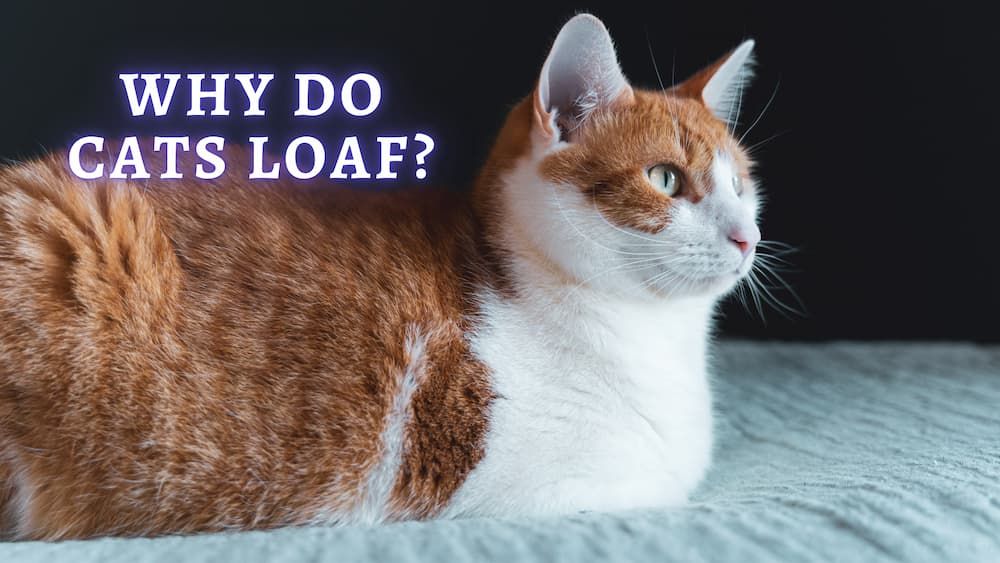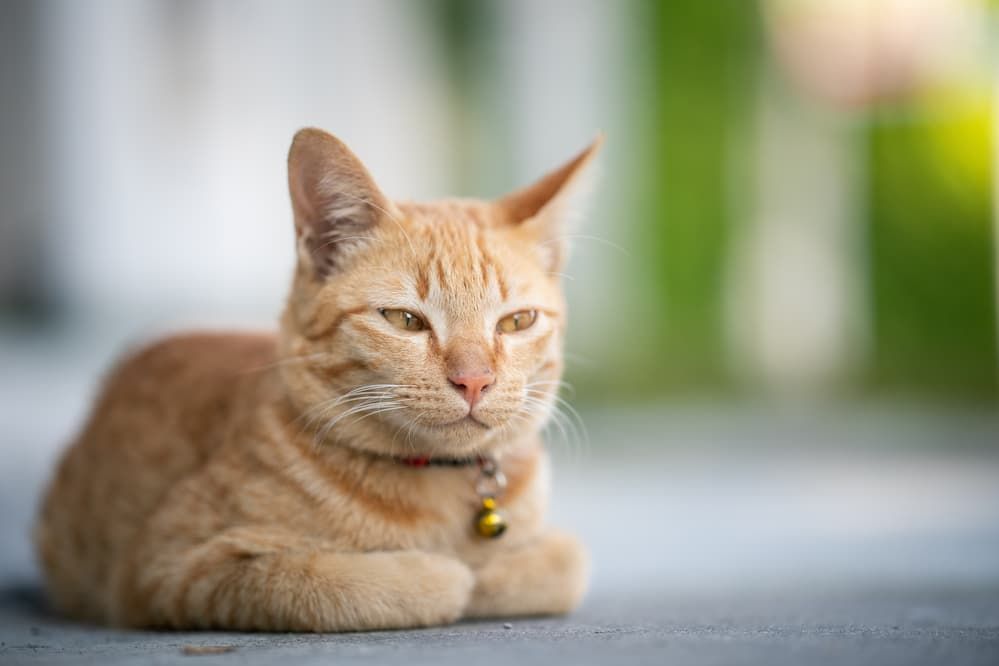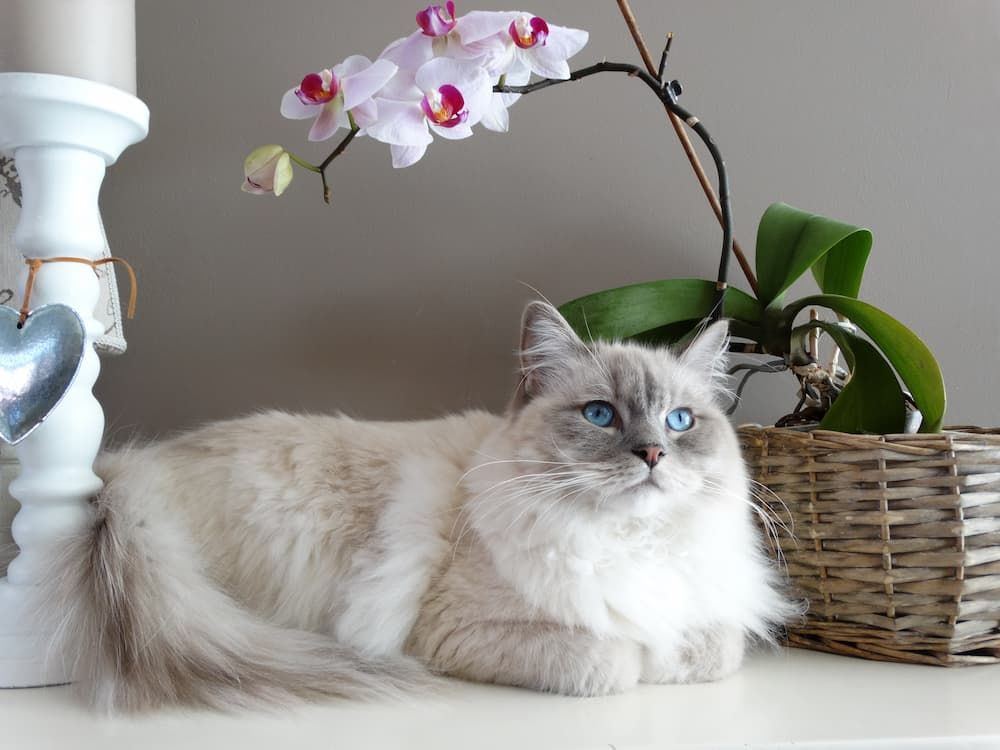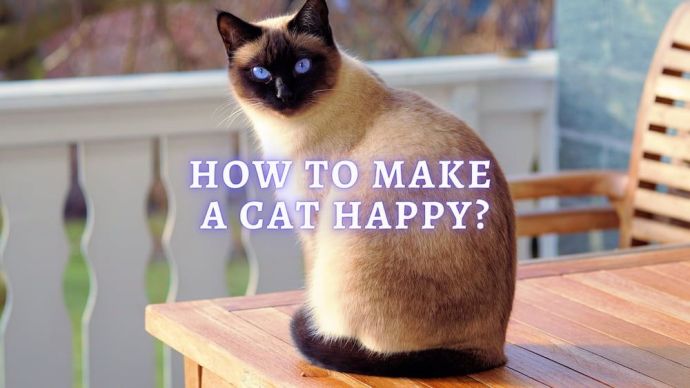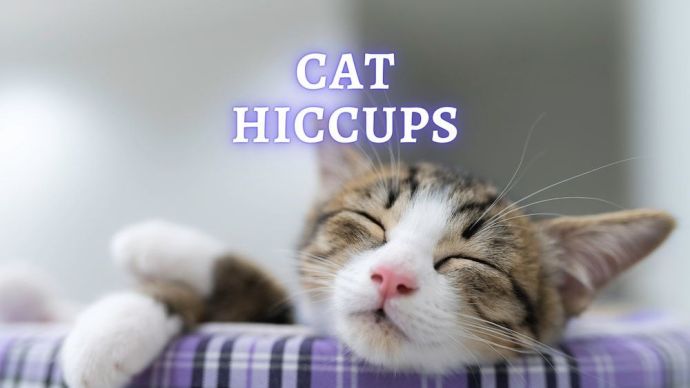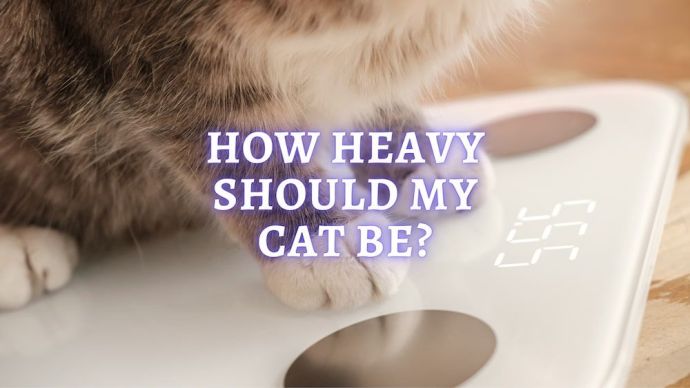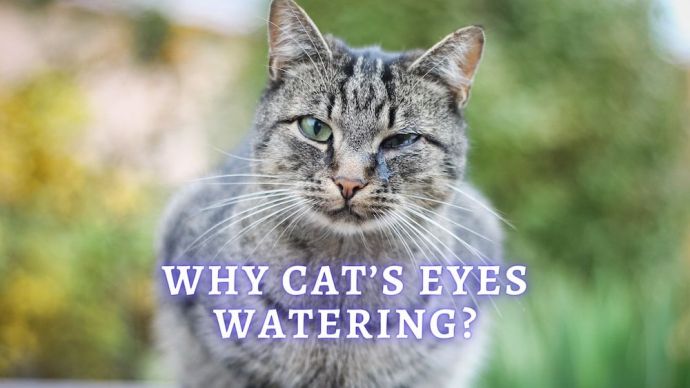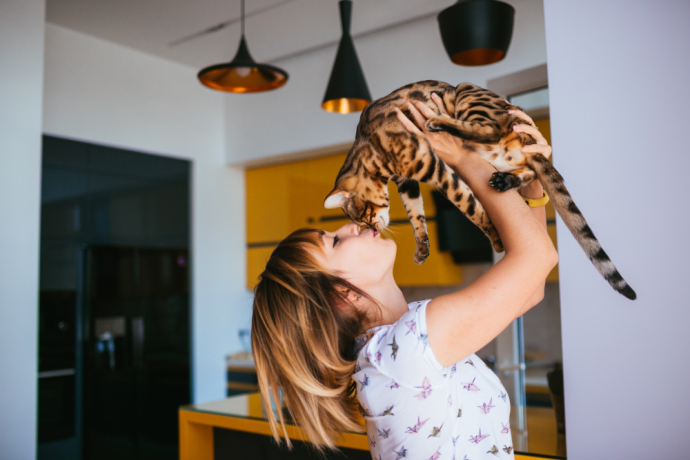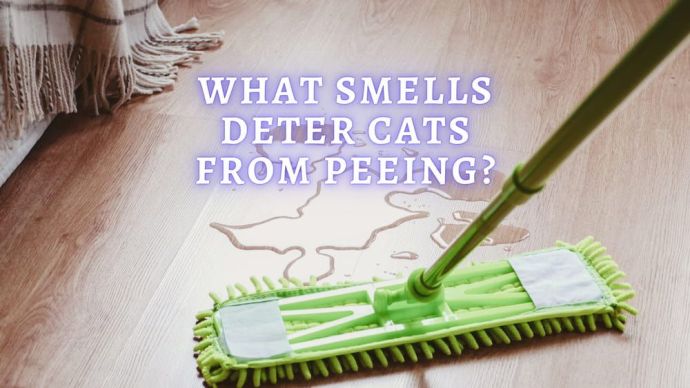Cat Loaf Position: What Does it Mean When your Cat Sit on their Paws?
Written by:
Author: Scott Jeffrey
Scott is a professional blogger with 12+ years of experience in writing, and holds an MA in anthropology. He has two cats as housemates. Also, Scott is passionate to research on pet-related topics such as dog training, puppy feeding, and cat health.
View all 63 articlesLearn about our editorial process and veterinary review board.
Viewed: 4035
Updated on: 06/15/2021
As a cat owner, it is likely when you are spending time with your pet at home. You may have observed a cat curling their paws tucked underneath and sitting in kind of a sphinx or loaf position. Many people are curious about this behavior and if it is a sign of unhealthy behavior, if it hurts the pet and how it gets into this potion in the first place.
The term loafing for cats started to come up a few years ago in a series of online communities. Loafing describes pets putting themselves in a position that resembled a loaf of bread. However, many people do not realize that this type of behavior is a form of body language and an essential way to gauge whether your cat is happy and healthy.
The meaning of this pet body language can be tricky, and not many people may understand why it is that their pet regularly loafs. Cats may not be doing this to make themselves look adorable, and the reason they loaf may come down to several factors regarding their behavior. Here are some of the top reasons why do pets loaf and more.
What exactly is Loaf Position in Cats?
Loafing in pets is a common way that many pets will tuck their paws in under their body. This type of movement will appear quite natural as they sit down and as they get comfortable. However, you may notice your cat lay down and then move their paws inward when they have a chance to settle. This is called loafing behavior because the pet will be pulling their legs inward, resembling a bread loaf when they are tucked in.
1. Comfort
Comfort is a significant factor in why many cats will choose this position. If your pet is lying in a loaf position, it is often to seek comfort. Cats love this position, and it is one of the best ways for them to lie down. It may not be the same level of comfort for you to get into this position, but this is as big a relief as reclining for a pet skeletal system. This is one of the most comfortable ways that your pet can take pressure off their joints, but it won’t leave them ready to pounce, so they need to be very relaxed to get into this formation and truly relax.
2. Your cat feel safe and happy
A pet that is feeling safe and happy will often start to loaf as well. Cats will pick the most comfortable position for them to lie down in, and one of the comfiest positions for many cats to choose is in a position where they are lying down with their arms crossed. Cats have a very different skeletal structure to other animals, so as a result, having paws under them can be seen as a super comfortable way to sit down and show that they don’t feel threatened at all.
3. To conserve their body heat
Thermoregulation is a reason that many pets loaf. Just as you would crunch up your fingers to try and warm them up, a cat will do the same if they feel cold or if their environment is cold. A pet in good health has a resting temperature between 100.5 and 102.5 F this is considered the neutral zone for their regulation, so they don’t need to expel any energy to heat or cool their bodies. When a pet is cold, they will draw their paws inward and potentially start with kneading behavior to cut out the chance that they will have to experience insufficient body heat. That will expend their energy.
4. Their paw is injured
Your cat may also have a problem with its paw. If the paw has been damaged, your cat may try to keep it out of reach and away from various irritants. Placing the paw under the body will make sure that it can’t be reached or interfered with. If your pet has overgrown claws or other issues, this can make it difficult for your pet to walk, and you may start to experience problems with limping or an unwillingness to put pressure on its paws. Most cat’s don’t like it when people touch their paws, but if you see your pet limping around and regularly loafing, you may need to investigate more closely. Wait till your pet gets up and observe their behavior if they are often loafing.
5. To mask an illness
Your pet may loaf if it is feeling very ill. There are certain types of loafing that are associated with kidney disease. CKD is a common disorder in older felines, and the position they get into resembles a loafing look. Most cats loafing will keep their head up and look forwards, but when a pet is loafing with CKD, it often points its head down and lies on its belly with its paws under its stomach. This form of loafing is to take some of the pressure off of the internal organs. Loafing will often occur in this form when your cat is in pain, so if you notice your pet looking down and loafing in a way where their paws seem to be removing tension from their organs, there is a good chance that your pet is masking a more serious illness.
RELATED: How to Tell if Your Cat is Sick? (Vet Advice)
6. Boredom
If a cat feels secure in the place where they are lying and are somewhat bored and comfortable, they are also likely to start loafing. It can be challenging for a pet to sleep in the same position all day or sit in the same position for an extended period, so loafing can help stretch the joints and find more comfortable sleeping positions.
How to tell if your Cat is Loafing?
Ensuring that your pet is loafing can be substantial, especially now that you have heard of the cause of loafing from serious health conditions like CKD. If you want to make sure that your cat is loafing for the right reasons, here are some questions that you can ask to make sure that your cat is loafing out of comfort and not something more serious:
Do they seem happy?
If your pet is happy, there is a good chance that it will be loafing out of comfort and security. Observe a pet with its head up and looking around the environment or looking at you when it loafs. Cats that are masking illness or in pain will often look down and away from you if they are loafing for a serious reason.
Is your cat limping?
If your cat is limping when they get up from a seated position, this could be a sign they are loafing for the pain they are experiencing. If you are in a position where your pet may be loafing and limping, this is a sign that you could need a vet appointment. A problem with their claw or an injury to the paw may be the cause, but the vet will also identify if the issue is more serious such as with chronic arthritis or inflammation.
Does your cat present any of the symptoms of chronic kidney disease?
CKD can present loafing as well. If you want to make sure that your pet does not show the signs of early CKD, check for symptoms of vomiting, lip licking, teeth grinding, loss of appetite, increased urination and drinking, and more. Poor dental health can also be associated with this kidney disease. Observe your pet’s behavior over the long term, and if you feel as though your pet may be experiencing some of the early signs, it could be wise for you to consider taking them to a vet to investigate these symptoms further.
READ MORE: Best Cat Beds
Other Cat Body Language
Now that you have learned more about loafing, it can be advantageous to know a bit more about the other types of pet body language that you can track and some of the other health concerns to watch for in your pet.
1. Kneading
This type of behavior is also similar to baking, kneading, or making biscuits. With this type of kneading, your cat may be on its stomach, and it may have this instinct as a leftover experience from when your cat was a kitten. This action stimulates milk production, and it is a common evolutionary trait that your pet will continue to perform as an instinct when they feel comfortable.
2. Squinting and slow blinking
Cats will do this as a signal of trust. If you see your pet blinking slowly at you, this is a sign that they are very comfortable with you. If you want to show your trust back to your pet, look into their eyes and blink slowly back. Your cats will not display this affection if they do not feel comfortable around you.
3. Rolling onto back
A cat will roll onto its back to show that it is in a playful mood. Depending on your pet’s temperament and energy levels, there is a good chance they may do this fairly often. However, be sure to proceed with caution when touching your cat on its back. Because many cats do not like their stomach felt even when they are in a playful mood.
4. Chirping and clicking
Chirping and clicking is another instinctual action that your pet will show off. Cat chirping and clicking usually work to get the attention of someone when your pet is excited. Cats or kittens use chirping to let you know to follow them or when they have something that seems very important. Clicking is usually associated with your cat being overly excited, but a standard chirp usually is a form of communication that will tell you to follow them or focus your attention on something.
5. Butt wiggles
A cat that wiggles its butt is likely in an exciting attack mode. This is often a fun-loving hunting tactic that cats that really want to strike for hunting purposes are not generally sued. You will likely see this behavior if you play with their pet and decide to pounce on a toy.
6. Sitting on electronics like laptops
Cats will sit on electronic regularly because they can help them to regulate their body temperature. If you see your pet sitting on your laptop or warm laundry, it is for the same reason. A computer or electronic device that is somewhat warm can feel good on their joints and make sure that they can regulate their temperature better.
7. Sitting in Boxes
Many cats will sit in boxes as an instinct.
Out in the wild, many cats will sleep in dens or places where they will not be disturbed. Boxes represent one of the best places to do this around the home. A pet can conceal themselves from predators with a box, and they can feel secure and safe. You may see your cats doing this if you have company over or if your pet just needs a few moments alone.
8. Hugging and then biting an area
Hugging and biting have caused many pet owners some quick scratches and bites when your cat gets very excited. This behavior often occurs when your pet is overwhelmed. If you are petting your cat and they grab you to bite you, this can show that they are feeling playful.
A bite is not a sign of distrust in this case but just an overly excited feeling where your pet does not know how to express their feelings.
9. Tail positions
A tail position of a pet can tell a lot about its feelings and how calm it may be. A cat with a tail with a downward curve can mean it is highly defensive, a relaxed cat will carry their tail in a more neutral or low position, and a very calm pet will have a straight-up tail with a hooked tip. Tail positions for aggressive behavior will also change to a tail that sticks straight up in the air. Keeping an eye on the tail position will ensure that your pet is relaxed and enjoying the best experience.
FAQ
Why does a Cat Kneed so much?
A cat will be kneed very much when they first wake up or when they feel comfortable. Kneading is instinctual, and it can often be a sign that your pet truly trusts you like their parent.
Is a Cat Kneading a sign of Affection?
Cat kneading is often considered a sign of affection and comfort because it is an instinctual feeling that your cat uses to stimulate milk production.
Do Cats feel love when you Kiss them?
Some cats like the idea of human kisses, and some cats do not. As cleaning is often seen as a sign of affection, your cat likely feels as though you are helping them with cleaning, and it can be taken as a sign of love.
Why do Cats lie down in front of you?
Cats will lie down in front of you when they have a great sense of trust in you. Your cat’s stomach is one of their most vulnerable spots, and they won’t offer you the same trust if they don’t feel comfortable around you.
Keep some of these top ideas in mind about cats and signs of what you should look for with your cats and loafing.
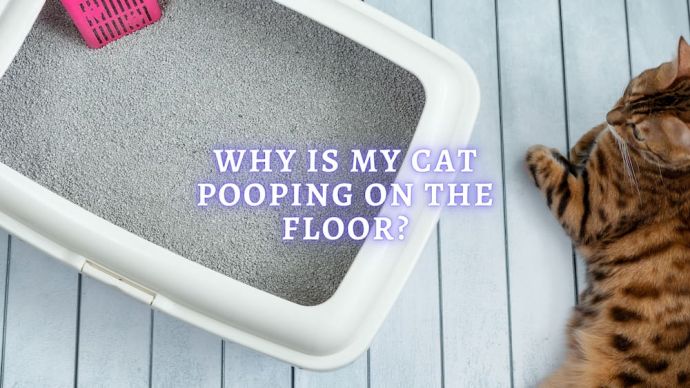 Cat Care Why Is My Cat Pooping on the Floor? How to Stop Cat From Pooping Outside the Litter Box
Cat Care Why Is My Cat Pooping on the Floor? How to Stop Cat From Pooping Outside the Litter Box - 370
- 0
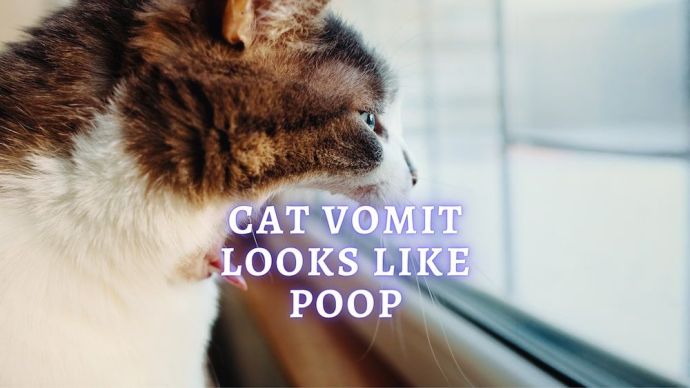 Cat Care Cat Vomit Looks Like Poop: What does your cat’s vomit say about their health?
Cat Care Cat Vomit Looks Like Poop: What does your cat’s vomit say about their health? - 3548
- 0
 Cat Care Why Does My Cat Attack My Legs? 10 Reasons Why and What To Do About It (Vet-Approved Advice)
Cat Care Why Does My Cat Attack My Legs? 10 Reasons Why and What To Do About It (Vet-Approved Advice) - 46013
- 21
 Cat Veterinary Tips Cat Stomach Gurgling: Vet Advice on Why is Your Cat Stomach Gurgling?
Cat Veterinary Tips Cat Stomach Gurgling: Vet Advice on Why is Your Cat Stomach Gurgling? - 36469
- 4
 Cat Veterinary Tips My Cat Lost its Voice: Can Cats get Laryngitis? (Vet Advice)
Cat Veterinary Tips My Cat Lost its Voice: Can Cats get Laryngitis? (Vet Advice) - 23554
- 13









